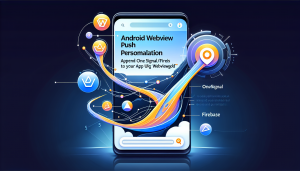
Delivering an engaging experience for users is crucial when developing Android web applications. One way to ensure user satisfaction and retention is by seamlessly managing app behavior during offline and online scenarios. Implementing dynamic content switching from offline to online modes can significantly improve your app’s usability and reliability. In this article, we’ll explore how you can effectively implement offline-to-online dynamic content switching in Android WebView apps. We’ll also introduce WebViewGold as a quick and simple solution that converts websites into powerful Android apps effortlessly.
The Importance of Dynamic Content Switching
With mobile app users accessing content on-the-go, connectivity issues are inevitable. Users expect apps to function smoothly regardless of their network conditions. Dynamic content switching ensures uninterrupted access to essential information, whether a user is online or facing limited connectivity. By managing transitions between offline and online content effectively, you enhance the overall user experience and keep your audience engaged.
Challenges with Android WebView Applications
Android WebView provides a convenient way to load web content directly within an application, but developers often encounter challenges when handling offline situations. Without proper strategies, your app may display unattractive error screens or fail to load expected content—both scenarios that frustrate users and negatively impact the app’s perception and ratings.
Implementing Offline-to-Online Switching: Best Practices
Here are several best practices you can follow to ensure smooth offline-to-online content switching in your Android WebView app:
- Cache Key Content: Utilize caching mechanisms to store essential content locally, allowing quick retrieval when the user is offline.
- Detect Connectivity Changes: Regularly check network status within your application using Android’s built-in connectivity APIs. React responsively to switch seamlessly between cached offline content and fresh online content whenever an internet connection becomes available.
- Provide User Feedback: Clearly inform users about their current connectivity status with subtle indicators or messages, thereby avoiding confusion or frustration when content briefly switches from offline to online mode.
Simplifying Implementation with WebViewGold
While these best practices greatly enhance your application’s performance, implementing them manually can require significant development effort and time. Thankfully, solutions like WebViewGold offer quick and straightforward ways to convert websites into robust Android apps effortlessly.
WebViewGold efficiently integrates offline-to-online dynamic switching capabilities by automatically caching content, detecting network connections in real-time, and ensuring seamless transition between offline and online experiences. Developers benefit from a simplified yet powerful solution without sacrificing usability or user satisfaction.
Enhance Your Android App Experience Today
Effectively managing offline-to-online dynamic content switching in Android WebView apps results in significantly improved user experiences. By adopting caching methods, accurately detecting connectivity changes, clearly communicating offline status, and leveraging WebViewGold‘s ease and simplicity, you can provide a high-quality, reliable application tailored for today’s dynamic mobile environment.
Transform your website into a compelling Android app quickly and effortlessly using WebViewGold, and deliver a consistent, reliable experience your users will appreciate.




